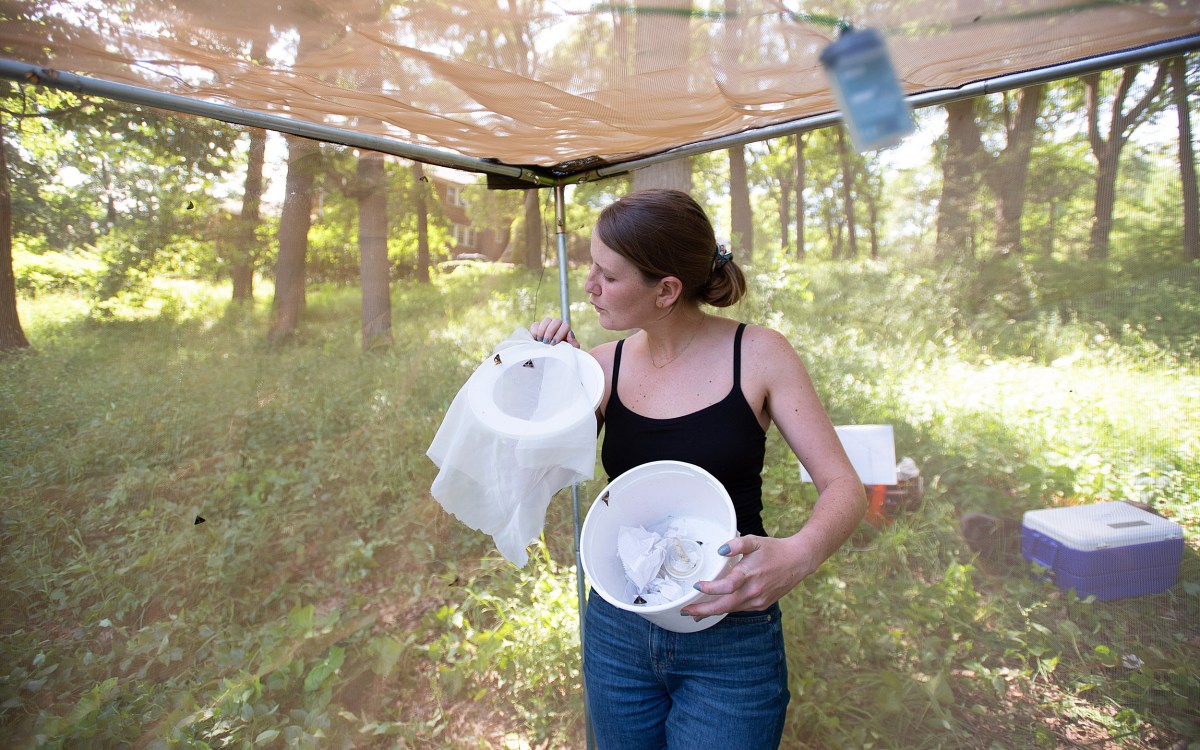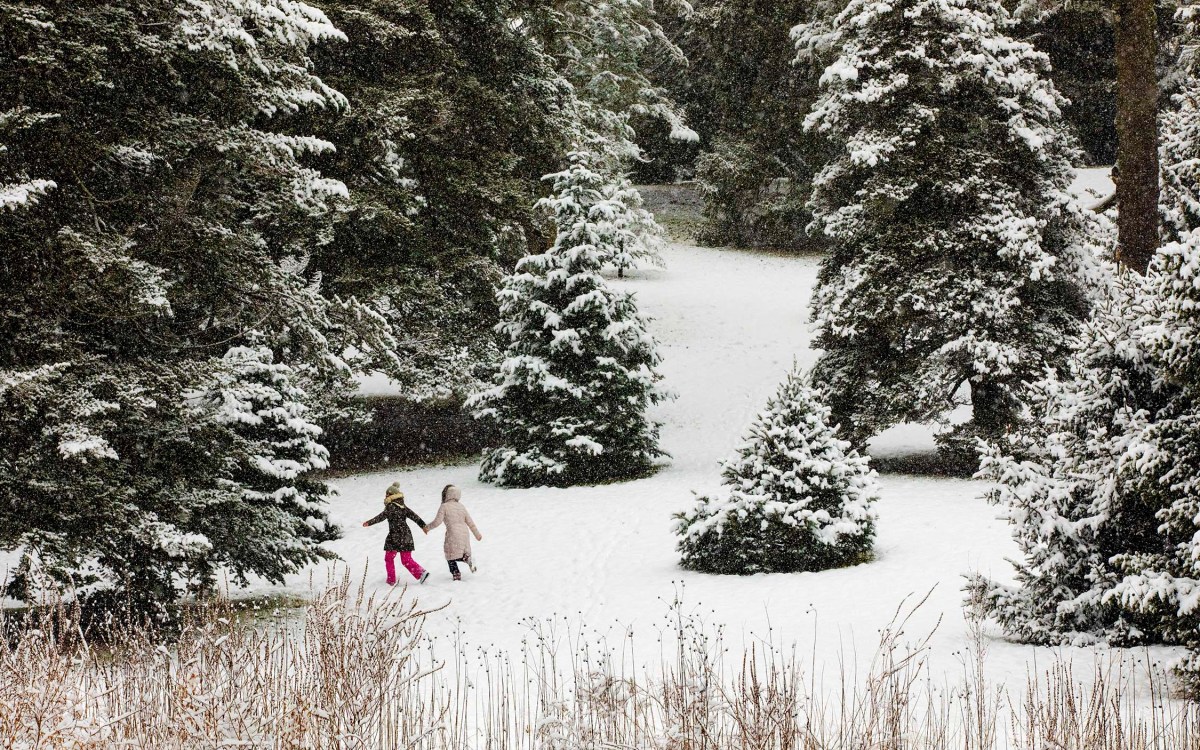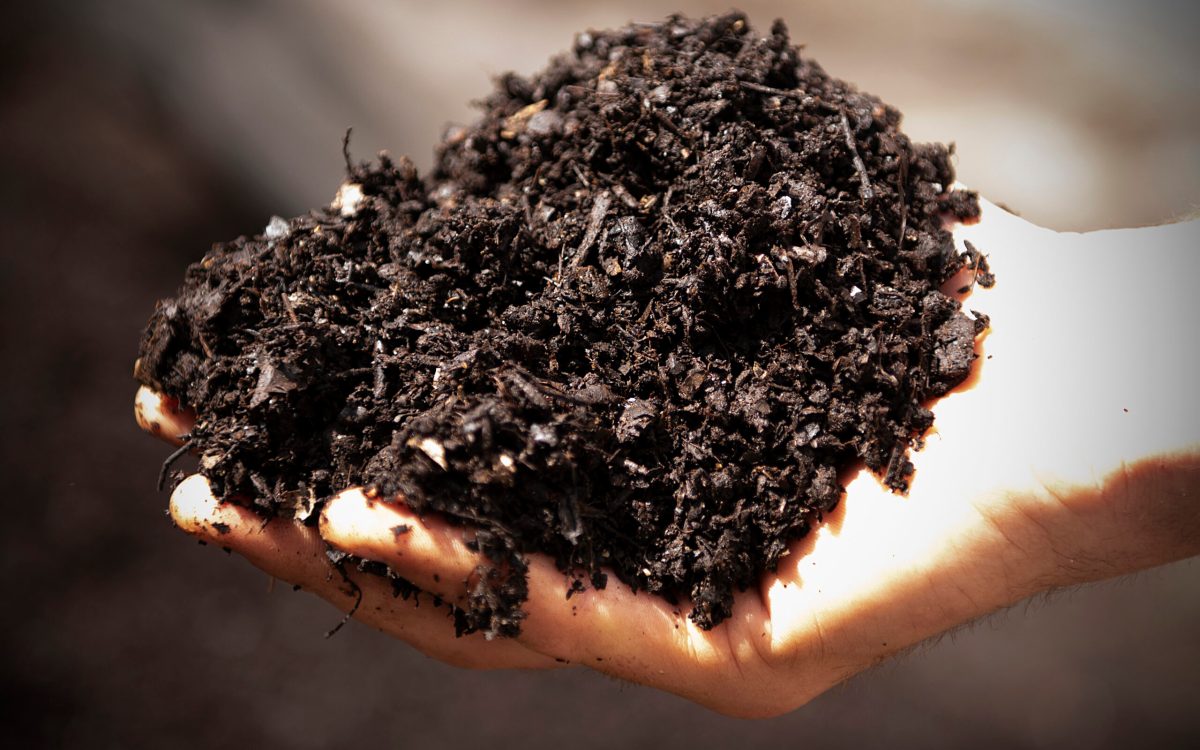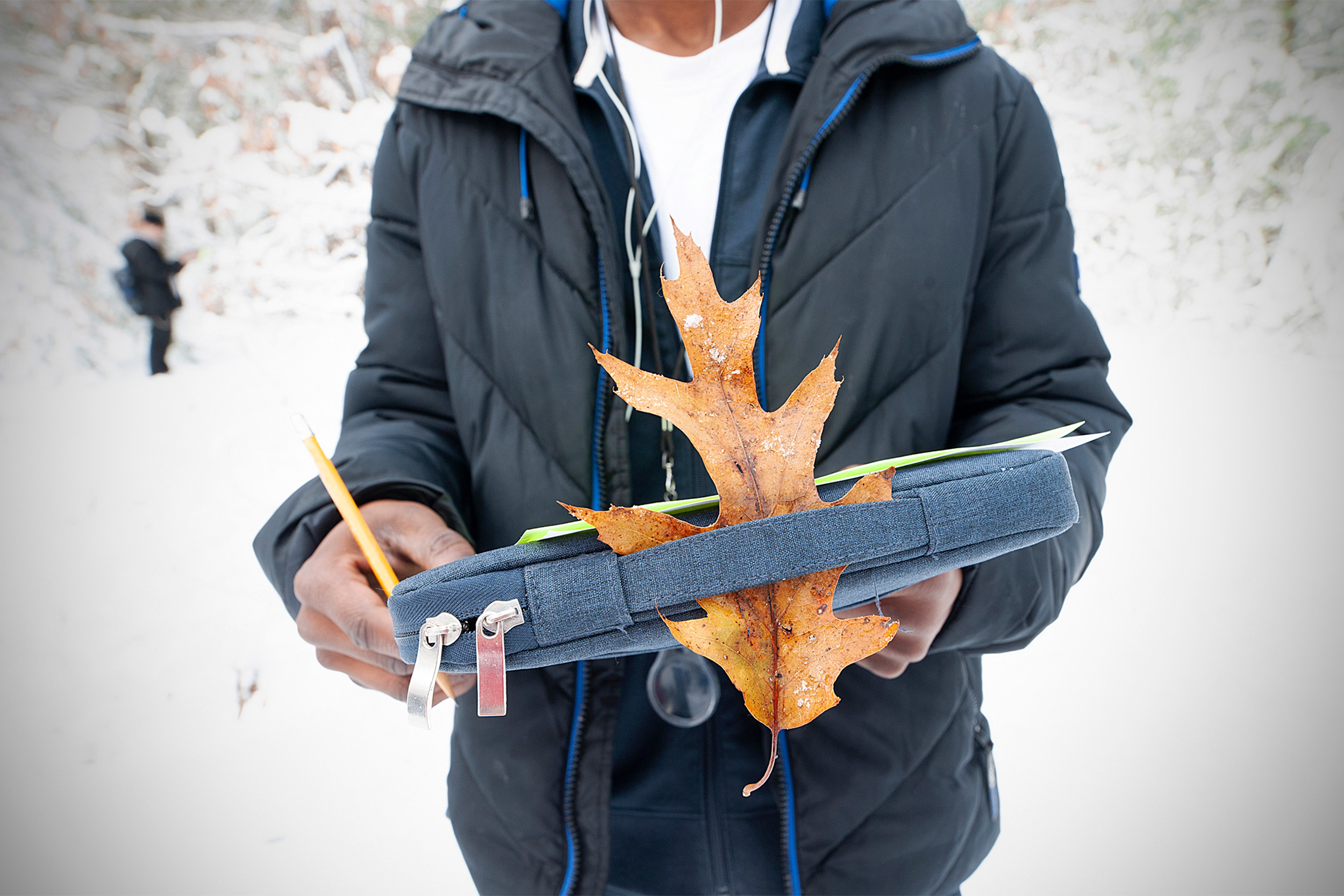
A red oak leaf placed perfectly in a Boston Day and Evening Academy student’s notebook during observational fieldwork at the Arnold Arboretum as part of a special outdoor biology class focused on climate change.
Photos by Jeffrey Blackwell/Harvard University
When the trees become the teacher
Boston high schoolers experience hands-on connection to climate change
As David Mays walked through the snow-covered Central Woods of the Arnold Arboretum of Harvard University last month, gazing at the red oaks and the eastern white pines, the 17-year-old wondered if trees alone can save the planet.
“Are trees the only thing that will stop global warming?” Mays asked. “How many should we plant before we graduate? I want to support humans, nature, and save the Earth.”
Mays was one of 25 high school students from the Boston Day and Evening Academy in Roxbury learning about forest ecology, carbon’s role in ecosystems, and how trees mitigate climate change at a special program at the Arboretum. Designed as part of Boston Public School’s biology curriculum, the two-day experience let students conduct hands-on fieldwork in the landscape and engage with Harvard researchers in interactive panel discussions about climate change.

Robin Hopkins, associate professor of Organismic and Evolutionary Biology (OEB), and faculty fellow at the Arboretum, said it’s vital that scientists take the time to explain, especially to students, how their work provides invaluable insights into the impact of global warming and possible ways to address it.
“Having the students visit the Arboretum was an invigorating reminder of how important our research is for understanding the impact of climate change,” she said. “It was incredibly inspiring to see how their teachers developed ideas into hands-on lessons with their students.”
Hopkins took part in a panel that covered plant collections, Arboretum research in the field and in the lab, the types of data collected, and what it all means in the bigger picture of climate change mitigation. Other presenters included OEB postdoctoral and Arboretum fellows Samridhi Chaturvedi and Ben Goulet-Scott of the Hopkins Lab; OEB graduate students Meghan Blumstein, Jess Gersony, and Anju Manandhar of Harvard’s Holbrook Lab; and Tiffany Enzenbacher and Sean Halloran from the Arboretum’s Dana Greenhouses.
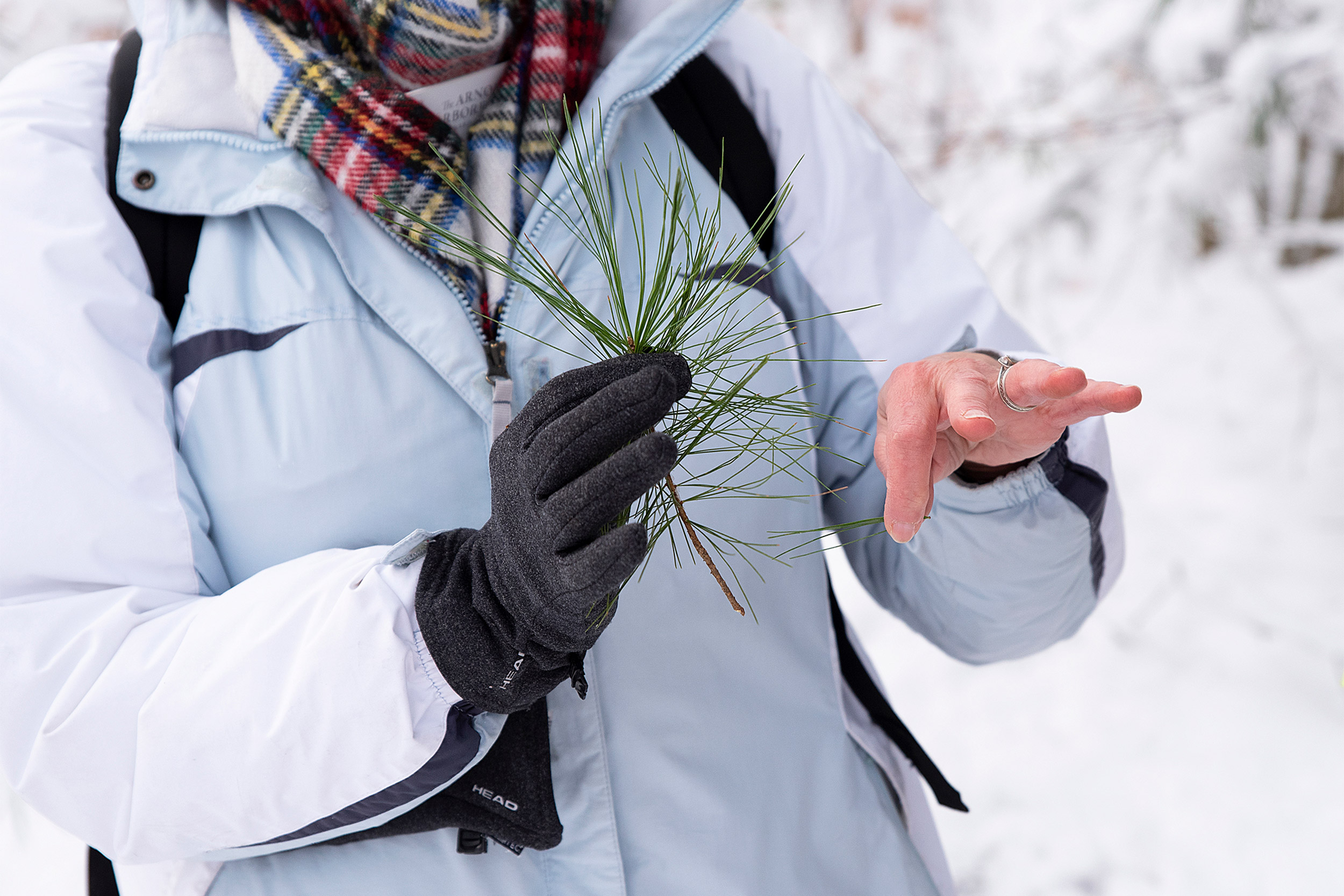
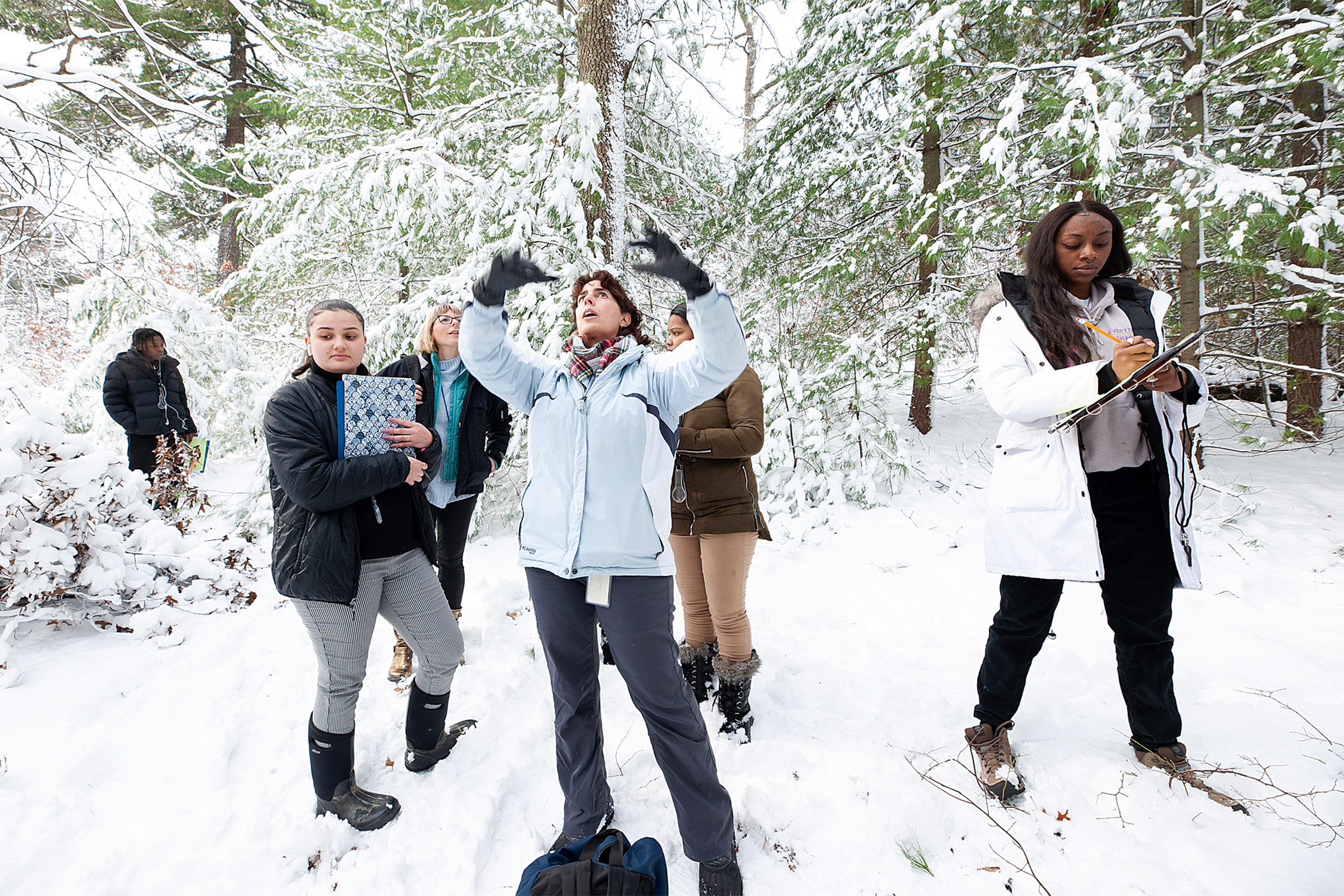
Ana Maria Caballero, nature education specialist, holds needles from an eastern white pine as she describes the trees in the Central Woods to students David Mays (from left), Karina Mckenna, Jennifer Mills, Sheyla Renoso, and Aaliyah Murphy.
“Everything is connected — life, biodiversity, and climate change.”
Aaliyah Murphy, student

By exploring the Central Woods, students became familiar with an urban forest. They took notes of mature trees’ distinguishing characteristics, examined leaf patterns, and recorded their impressions in a journal. They learned how to decipher tree-identification labels — the aluminum tags providing curatorial information, including plant family and Latin binomials for the species, Arboretum accession and lineage numbers, and where the plant was originally collected.
Chaturvedi, whose research on the genomic basis of adaptation and speciation focuses on how butterfly populations adapt to habitat changes, said working with students helps them understand the value and beauty of biology.
“I really enjoyed talking to the high school students about butterflies as herbivores and their role in climate change,” she said. “I was amazed by their questions and how involved they were. I hope these opportunities help emphasize the importance of our research and expand their curiosity for science.”
Students also conducted fieldwork along the Arboretum’s Meadow Road, measuring tree diameters, collecting air temperature readings, analyzing soil composition, and making journal entries about the shapes of trees.
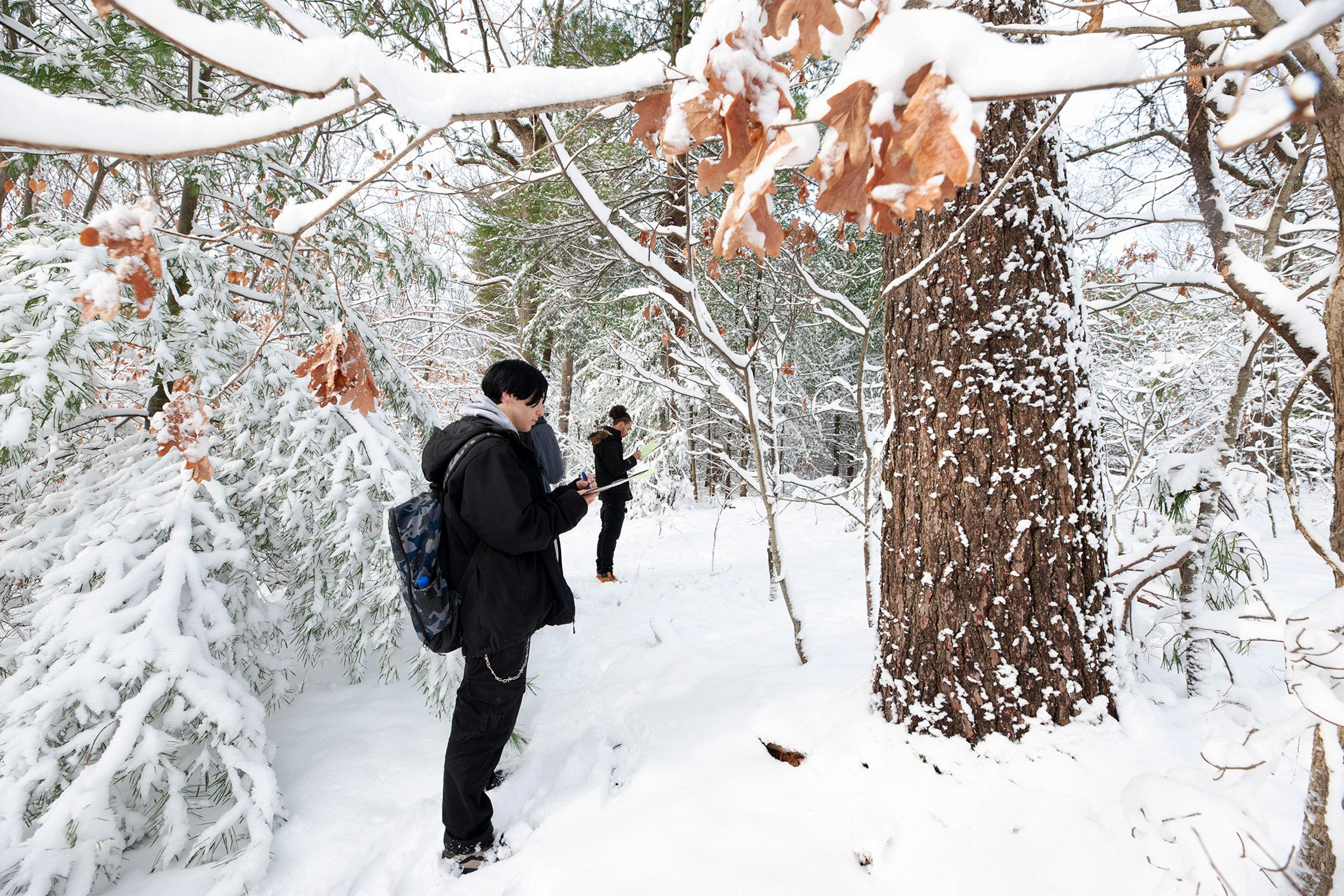
In the panel discussions in the Hunnewell Building Lecture Hall, students learned about carbon and water movement in trees; environmental changes that cause water fluctuation in leaves; plant-collecting expeditions and documentation; and the wealth of information contained in citizen science plant databases and other important climate change resources.
Nineteen-year-old Aaliyah Murphy said learning at the Arboretum was her favorite part of the curriculum this year.
“I feel like things I already thought I knew about, I now have more information, it’s all so much more understandable,” she said. “Everything is connected — life, biodiversity, and climate change.”
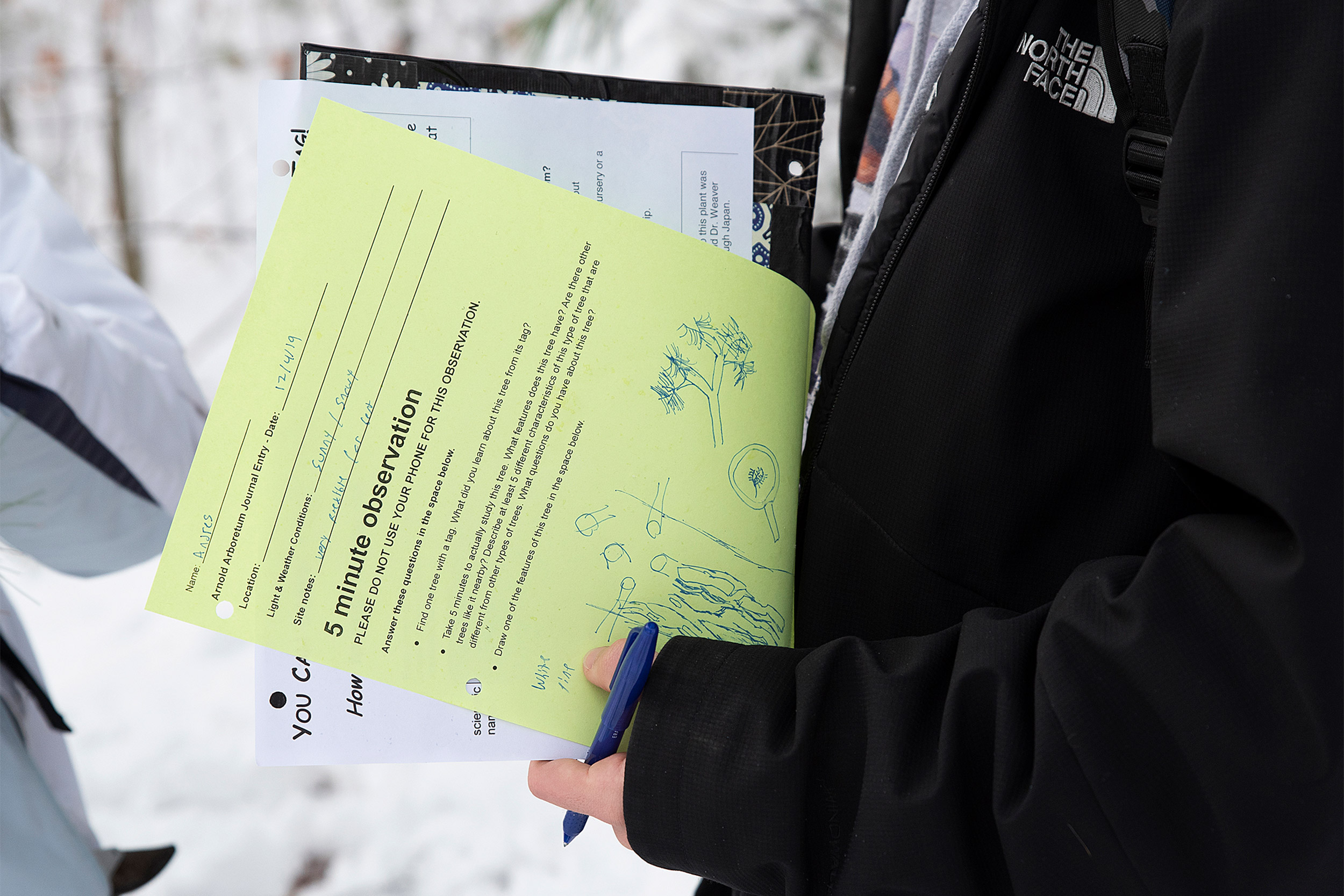
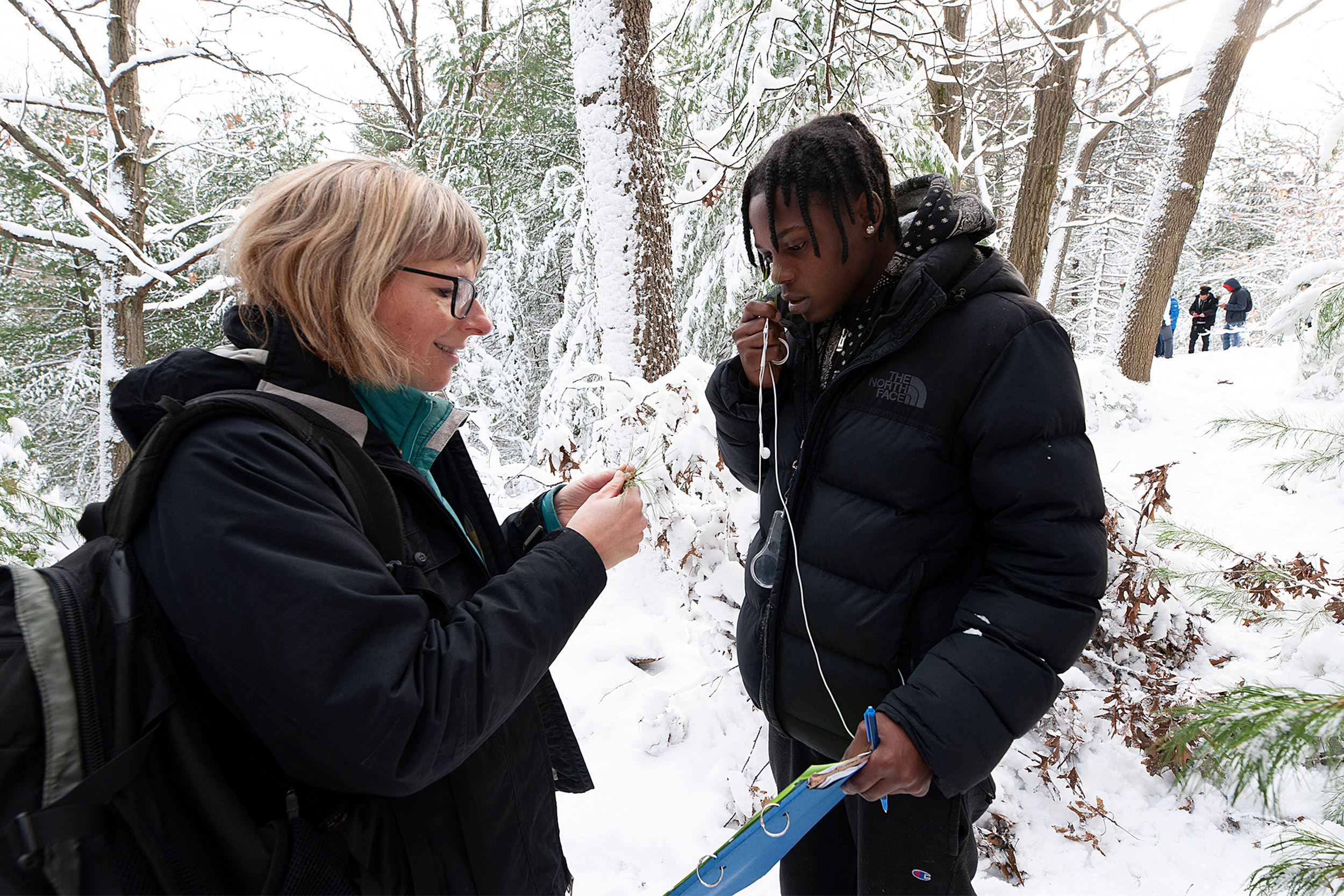
Jennifer Mills, biology teacher at the Boston Day and Evening Academy, holds an eastern white pine stem while student David Mays smells a pine needle.
The Boston Day and Evening Academy program is designed to reengage students who have fallen off track at school. The joint project with the Arboretum was inspired by the 2019 Summer Institute, which Day and Evening Academy biology teacher Jennifer Mills attended and called soul-nurturing. She said she wanted her students to have the same chance to gain deeper appreciation for the natural world, ask questions about what they see, and learn how to use field techniques to methodically test their answers.
Ana Maria Caballero, nature education specialist at the Arboretum, believes the best way to learn about something is to “get out there, interact with it and see the potential for working with it.”
“The students who came, came because they care about saving the Earth, and wanted to learn more about climate change, what it means, and how to find solutions,” Caballero said. “Their minds were opened to the different ways they can become agents of change for a better future.”
Echoing that sentiment was Arboretum Director and Arnold Professor of Organismic and Evolutionary Biology William (“Ned”) Friedman: “It is clear that our generation has done a terrible job of stewarding the planet and its precious biodiversity,” he said. “The amazing energy of these students, their curiosity, and their passion to figure out how to analyze and mend the Earth give me hope for the future.
To read the full story, visit the Arnold Arboretum’s website.



